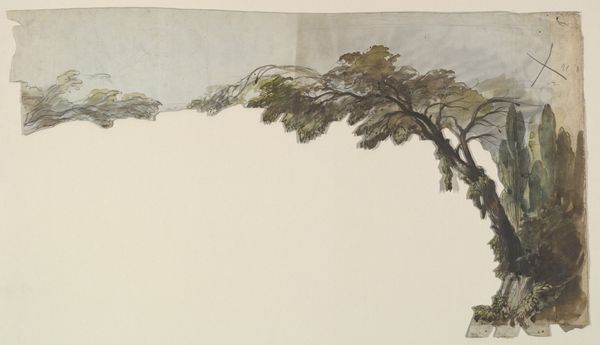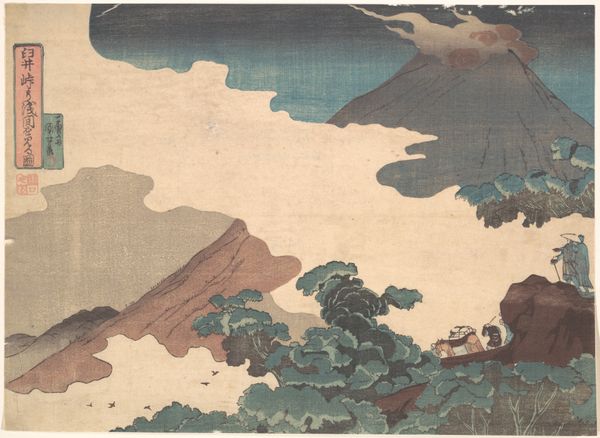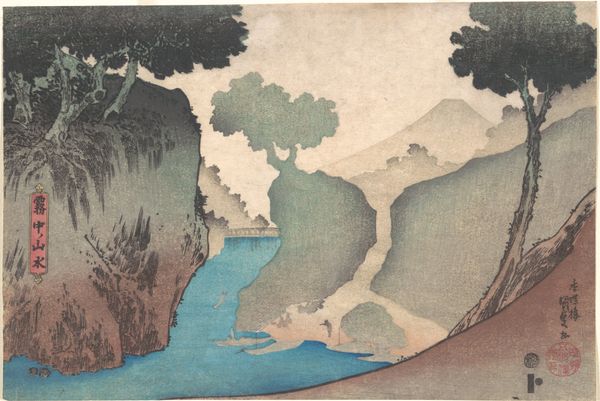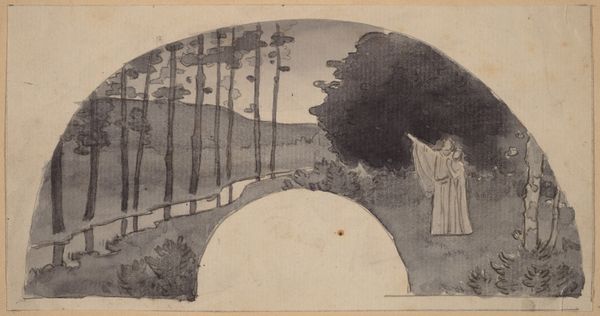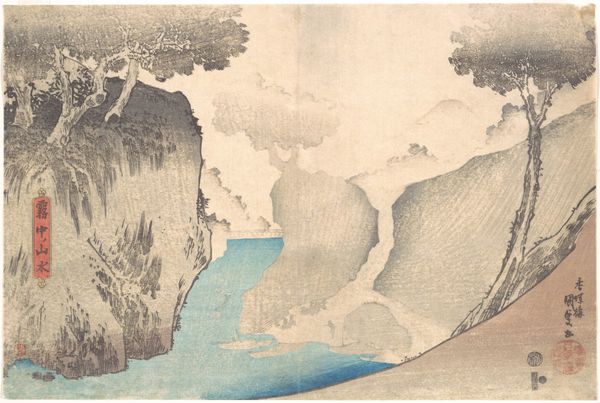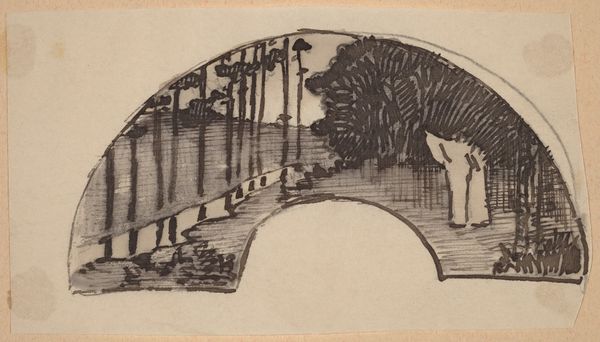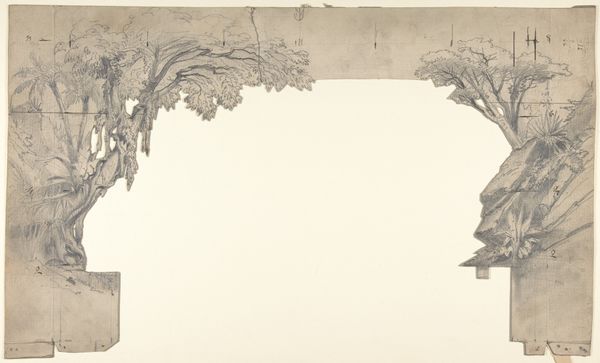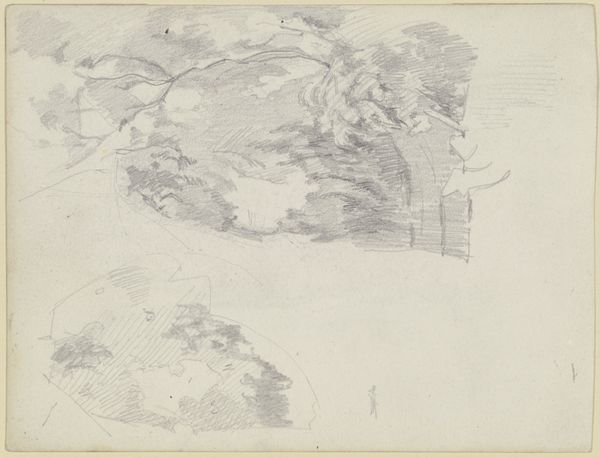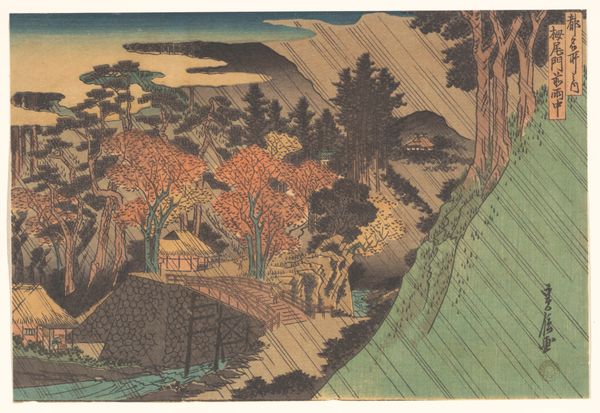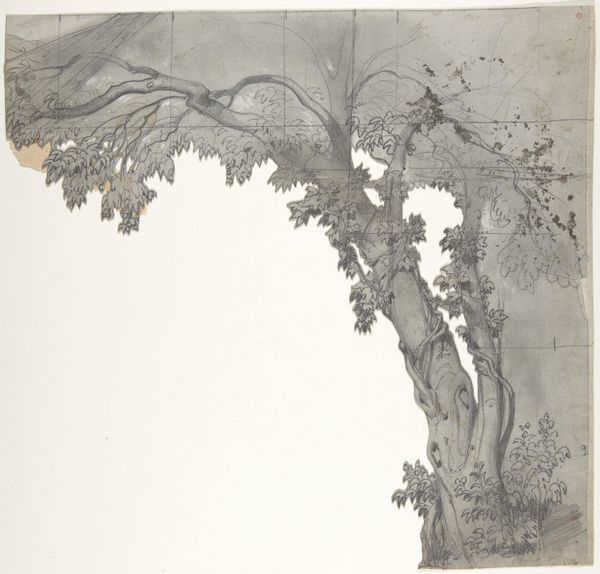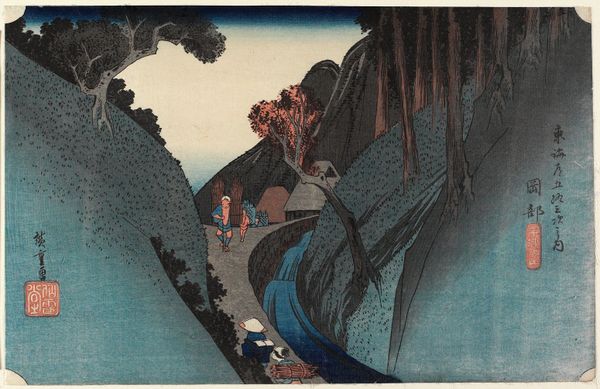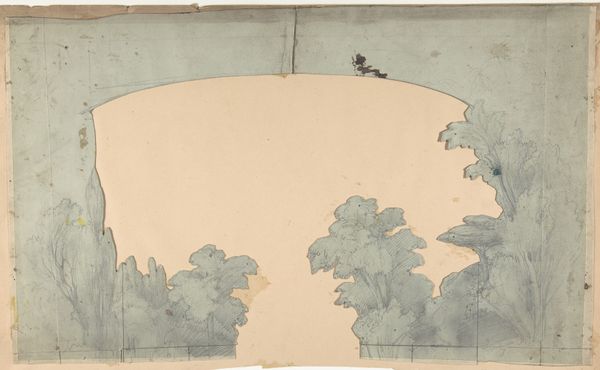
Dimensions: sheet: 8 × 15.1 cm (3 1/8 × 5 15/16 in.) mount: 30.1 × 46.1 cm (11 7/8 × 18 1/8 in.)
Copyright: National Gallery of Art: CC0 1.0
Editor: This is Charles Sprague Pearce's "Study for an Archway," created between 1890 and 1897 using watercolor. It gives off such an ethereal, almost dreamlike feeling. What stands out to you in this piece? Curator: It’s interesting how Pearce uses watercolor, traditionally associated with landscape and preparatory sketches, to evoke a sense of romanticism. The loose application of pigment across the paper’s surface points to the process – the absorption and dispersal of water – as a key element in constructing the image, and, by extension, its meaning. We need to look into the industrial manufacture and increased accessibility of these pigments during the period. It moves beyond the ‘high art’ of oil painting to question artistic value. Editor: That's fascinating! So, you're saying the very *stuff* of the painting—the materials—were significant to its interpretation back then? Curator: Exactly. Consider the archway itself. The support system needed to create such a massive structure is labour intensive, thus referencing consumption and social class. Are we to focus only on the beauty when the economic structures point to elitism? Does this make the image problematic? Editor: Hmm, that adds a layer I hadn't considered. It’s more than just a pretty scene. It’s highlighting societal norms too! Curator: Precisely! And by drawing attention to those accessible materials – the paper, the dyes – we see the ways in which artistic practices and societal realities intersect, in contrast with other arts produced from rare resources for the upper class. Editor: I never would have thought to connect the materials with such broad themes! This has given me a whole new lens through which to look at art. Thank you! Curator: And it makes us look at these conventional landscapes through different viewpoints which challenge traditional value judgements within art history itself.
Comments
No comments
Be the first to comment and join the conversation on the ultimate creative platform.
